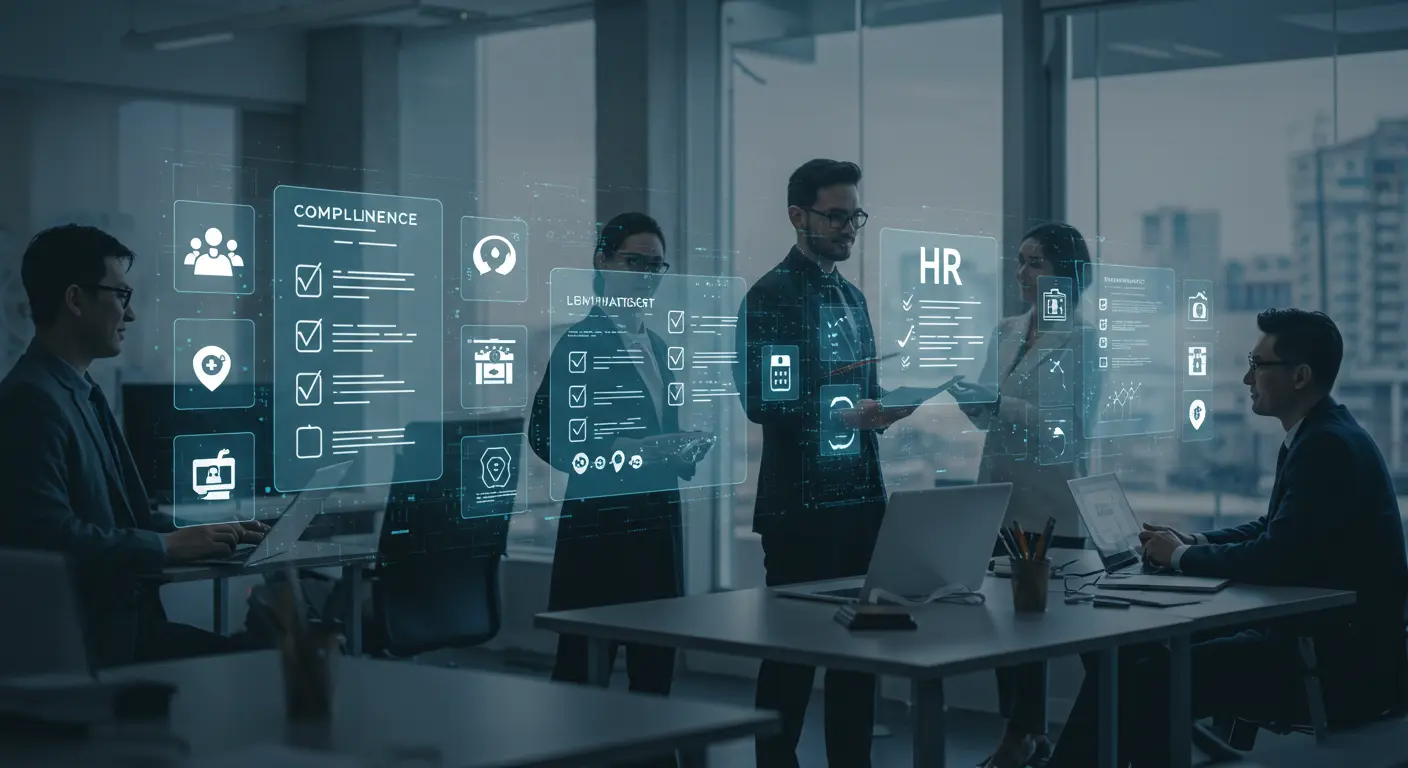How HRMS Supports Labor Law Compliance and Regulatory Adherence?
In an era of constantly evolving labor laws and regulations, compliance is no longer optional—it's essential. This is where HRMS systems play a vital role, helping organizations stay compliant while reducing legal risks.

As the modern workplace becomes more complex and labor laws evolve rapidly, organizations face increasing challenges in maintaining compliance with local and international regulations. Failing to comply can lead to severe fines, legal complications, or reputational damage. This is where Human Resource Management Systems (HRMS) come in as intelligent tools that automate compliance processes, maintain accurate records, and ensure full alignment with labor laws.
HRMS helps track working hours, manage leaves, enforce minimum wage standards, protect employee data, and generate regulatory reports effortlessly. With a robust solution like PeopleZone, businesses can achieve operational excellence while remaining fully compliant with legal and regulatory demands.
What is a Human Resource Management System (HRMS)?
A Human Resource Management System (HRMS) is an integrated software solution designed to manage and streamline all employee-related operations within an organization. This includes payroll, leave management, attendance tracking, performance evaluation, recruitment, training, and—critically—compliance with labor laws and regulations.
The true strength of HRMS lies in its ability to unify HR data and automate workflows, which reduces errors, saves time, and enhances the employee experience. It also generates accurate and real-time reports that empower management to make informed strategic decisions. In today’s regulatory landscape, a reliable HRMS is essential for any organization aiming for secure, compliant, and scalable growth.
Why is Labor Law Compliance Important for Every Organization?
Labor law compliance is more than just a legal obligation—it’s the foundation for a safe and stable work environment. Non-compliance can result in heavy fines, legal disputes, and reputational damage, all of which can erode stakeholder trust and employee morale.
Beyond legal risks, compliance fosters a positive workplace culture and boosts employee loyalty. When employees feel their rights are respected and protected, they become more productive and engaged. Moreover, organizations that prioritize compliance are more likely to attract and retain top talent, as professionals prefer to work for companies that operate transparently and ethically.
How Does HRMS Automate Legal Compliance?
An HRMS helps organizations automate various aspects of labor law compliance, minimizing human error and ensuring up-to-date alignment with evolving legal standards.
With customizable settings, the system can:
- Automatically apply local labor laws such as minimum wage and working hour limits.
- Accurately track attendance and ensure legal work hour compliance.
- Manage public holidays and annual leave in accordance with labor policies.
- Generate real-time alerts for any legal violations or discrepancies.
- Provide detailed audit-ready reports for inspections and compliance reviews.
This seamless integration between technology and regulations empowers businesses to operate confidently, focusing on growth rather than fearing penalties.
The Importance of Legal Updates and the Role of HRMS in Tracking Them
In today’s dynamic work environment, labor laws are frequently updated by regulatory bodies—whether it’s changes in minimum wage, insurance benefits, or hiring policies. Overlooking these updates can expose organizations to legal risks and costly penalties.
This is where HRMS proves invaluable. The system can either integrate with official legal sources or allow HR teams to manually update rules with ease. It also provides real-time notifications when changes occur or when updates are required.
By leveraging this functionality, organizations stay legally compliant, up-to-date, and efficient—without the burden of constant manual monitoring or administrative strain.
The Benefits of Legal Documentation and Reporting in HRMS
One of the most powerful features of an HRMS is its ability to generate and store precise, comprehensive legal documentation and reports. These records not only ensure compliance but also serve as a protective asset in case of legal disputes or government audits.
Examples of such documentation include:
- Attendance and timesheet logs.
- Payroll, tax, and compensation records.
- Employee contracts and performance reviews.
- Training sessions and overtime documentation.
- Evidence of compliance with leave and insurance laws.
All data is securely stored and easily retrievable with a click, simplifying inspections and significantly reducing the administrative burden on HR teams.
PeopleZone: The Ideal HRMS Solution for Legal Compliance
PeopleZone is one of the most advanced and efficient HRMS solutions focused on helping organizations achieve full compliance with labor laws and regulatory requirements. With an intuitive interface and seamless integration with local legal databases, PeopleZone automatically updates policies to reflect the latest legislation.
The system offers comprehensive automation for attendance, payroll, leave management, and legal reporting, alongside smart alerts that enable HR teams to respond promptly to legal changes or potential violations.
By adopting PeopleZone, organizations ensure legal compliance, enhance operational efficiency, and create a safe, compliant workplace environment that boosts employee satisfaction and motivation.
Conclusion
In a rapidly changing world with increasing labor laws and regulations, compliance has become an essential requirement for any organization aiming for stability and growth. HRMS stands out as a vital tool that facilitates effective compliance through automation, documentation, and continuous updates.
By choosing a comprehensive HRMS like PeopleZone, companies can minimize legal risks, improve employee experience, and enhance overall HR performance. Investing in an advanced compliance-supporting system is a strategic step toward a safer and more successful future.


